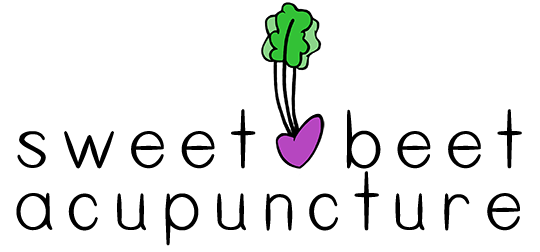What is the Candida Cleanse?
Candida is a specific type of yeast (or fungus) that lives in our bodies, which is weird, I know.
Most of the time this yeasty little hitchhiker doesn’t cause any problems because it’s kept in check by our immune system and plenty of probiotics, which are the “good” bacteria that live in our gut. Unfortunately, under certain conditions candida can overgrow and cause symptoms that range from frequent vaginal yeast infections, urinary tract infections, oral thrush, fatigue, digestive issues, or even sinus infections.
Because our bodies normally keep candida in check with our immune system and healthy gut flora, undergoing a candida cleanse is a common treatment for anyone prone to overgrowth of yeast. The cleanse includes avoiding sugar, simple starches, gluten, yeast/mold/fungus-containing foods, and other gut irritants, while eating plenty of veggies, lean proteins, and probiotic-rich foods.
It can feel overwhelming to take on any kind of cleanse, but it’s actually a fairly simple plan to follow and only takes a few weeks to reset your system. Plus, most my patients who do the candida cleanse love the effect it has on their digestion, mood, energy level, and skin clarity.
The 3 Categories + 3 Phases
I find it most simple to break the foods into 3 categories and to follow the cleanse in 3 phases. Here’s how it works:
Phase 1: for the first 1-2 weeks eat mostly foods from category 1, and a very sparing amount of foods from category 2, avoid all foods from category 3.
Phase 2: for the next 1-2 weeks you can start to incorporate more foods from category 2, but still avoid all foods from category 3.
Phase 3: ongoing you can start to slowly incorporate foods from category 3.
Your symptoms should disappear or reduce within 2 weeks, if they return or worsen then you should consider being more strict about the foods you’re eating, returning to the previous phase, or re-starting the cleanse entirely.
Now let’s go over the food categories…
Category 1: Eat/drink as much as you’d like
Non-starchy vegetables: leafy green veggies (including kale, chard, mustard greens, brussel sprouts, cabbage, spinach, lettuces), broccoli, cauliflower, cucumbers, avocados, eggplant, garlic and onions, tomatoes, zucchini, celery, olives
Lemons and limes
Fermented foods (look for live cultures, which must be refrigerated, and avoid products with added sugars): sauerkraut, kefir, yogurt, kimchi, pickles
Water, sparkling water, herbal tea (without any sweeteners)
Eggs
Organic poultry
Wild-caught fish such as salmon, herring, or anchovies (avoid swordfish, tuna, and shellfish)
Good quality fats: coconut oil, olive oil, grassfed ghee or butter
Coconut products (except for coconut sugar/syrup)
Apple cider vinegar (no other vinegars)
Low mold nuts and seeds: almonds, cashews, hazelnuts; flax, sesame, sunflower, or pumpkin seeds
Gluten-free grains: millet, quinoa, buckwheat, oat bran, or teff
Salt and any herbs or spices
Category 2: Eat/drink sparingly
Starchy vegetables: potatoes, sweet potatoes, carrots, corn, pumpkin, winter squash, beets, peas
Low to moderate sugar fruits: berries, apples, pears, stone fruit, citrus, melon
Certain gluten-free grains: amaranth; black, brown or wild rice
Caffeinated beverages: coffee, decaf coffee, black or green tea
Vegetable juices
Kombucha (even though it’s fermented it can be higher in sugar than other fermented foods)
Red meat (organic, no hormones or antibiotics): grass-fed beef, lamb, bison
Moderate to high mold nuts and nut products: nut milks, nut butters, peanuts, pistachios, walnuts
Beans, lentils and other legumes
Category 3: Avoid completely in the initial phases
Refined sugars: white or raw sugar, honey, agave, coconut sugar, fruit sugar or syrups, or any products that have sugar added to them (even a small amount)
Sugar substitutes
High sugar fruits: banana, mango, dates, grapes, dried fruits, fruit juices
Refined oils: corn, soy, cottonseed, canola or “vegetable” oils; margarines
Gluten and gluten containing foods (beware of just buying “gluten-free” foods because many still contain quite processed and contain high levels of carbs/sugar)
Gluten-containing grains: wheat, barley, rye, spelt
Shellfish, swordfish, tuna
Soda (sparkling water is okay)
Dairy: milk, cheese, cream
Alcohol
Mushrooms, including medicinal mushrooms, such as reishi
Brewer’s yeast/nutritional yeast
Cured, smoked, or pickled meats
Vinegars, except for apple cider vinegar
Processed foods
What Else?
Even though changing your diet is the foundation of the candida cleanse, there are lot of ways to support your immune system and gut health to flush the excess candida out of your system. Typically while my patients are undergoing the cleanse I recommend:
Get acupuncture weekly to boost immunity
Use herbal medicine to further encourage proper candida balance (consult with an herbalist for specific recommendations)
Choose organic foods as often as possible
Stay hydrated to flush toxics out of the system
Take a strong probiotic supplement to boost the population of probiotics in the gut (especially important if you’ve recently taken antibiotics)



